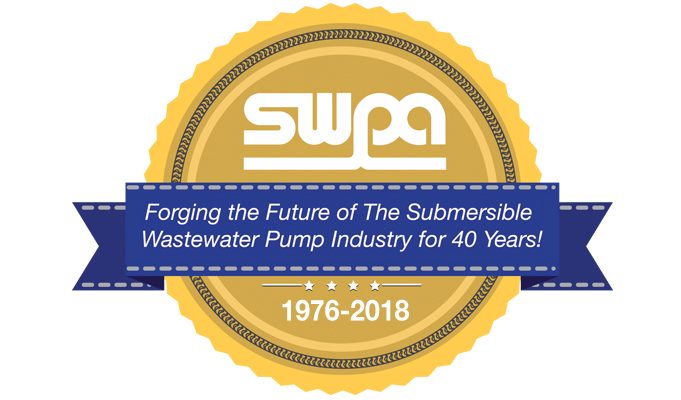SWPA 2018 SUMMER MEETING AND PLANT TOUR
Where: Charlotte, North Carolina
When: August 8-9, 2018
Limited to the first twenty-five applicants, this two-day event features a wastewater treatment plant tour, SWPA committee functions, and several activities for pumping professionals. The registration form is available for download at www.swpa.org.
Submersible wastewater pumps have built their reputation on reliability and performance, but improved efficiency is an oft-overlooked benefit they provide. One boon to efficiency has been the technological leaps forward made in both monitoring and power equipment. However, improved efficiency has also come from experience pump operators sharing information on how different challenges can best be met and applied in new situations. In this month’s SWPA Insight, Michael Gaza of Schneider Electric and John Lord of Homa Pump join SWPA’s executive director Adam Stolberg to share their experience with MPT readers.
What are the most common “best practices” in improving a submersible’s efficiency?
Of key importance is selecting the right pump for the application, in other words, asking the right questions. Is it going to service a prison, or nursing home (solids concentration), is it in an area that could have high abrasives, or brackish water (different material or coating)? In addition to the pump, what else might be required in the system, channel grinder for high solids, or maybe controls that reverse a pump when a clog is sensed by monitoring the pump torque?
To maintain the efficiency of a pump and pump system requires a PM (preventative maintenance) program with at least annual checks, more frequently with high use stations. In addition to standard checks, some manufacturers require impeller adjustments with the frequency increasing with the pump usage.
Where are you seeing the most benefits in improved efficiency in today’s submersible pump applications as compared with the past?
The pump industry has had to change with the change in the waste stream. Today, we have modern trash, non-flushable wipes for example and low flow toilets, so the concentration of solids and types of solids is different than the past and the pumps and pump systems have had to adapt to this. With pump improvements and new hydraulic designs, pump manufacturers have pumps that better handle the increased solids at a better hydraulic efficiency.
Those that benefit the most from the improved efficiency of a submersible pump application are the heart of the wastewater industry: the operators. With the right pump for any given system, you can eliminate the middle-of-the-night callouts and save the local authorities untold added expenses.
With today’s waste stream, the design of a new pump station can be difficult, so to obtain the best efficiency for the pump system, there should be a joint design effort from operators and engineers.
How have changes in monitoring and control technology improved the efficiency of submersible pumps in the past decade?
From a control perspective, any closed loop feedback that can be obtained from a mechanical pump system will add value to the operational efficiency of that system. If you consider “operational efficiency” to include things like reduced downtime, improved running conditions, operational setpoint optimization, then monitoring and control feedback has certainly provided improvements in this area.
As far as the pump itself, the improvements on electrical and mechanical design should be addressed by pump manufacturers, but clearly, the overall efficiency based on winding designs, electromagnetic characteristics have contributed to overall system efficiency gains.
How can “smart” technology and the Industrial Internet of Things (IIoT) influence submersible applications?
IIOT can bring a value to the end user in the form of data visualization. What that means is the operational conditions of the submersible pump can be monitored, exported, and turned into a visual representation on graphic dashboards, or other data visualization programs so that an operator can easily understand active operating conditions and trend analysis for better decision making on how best to run the pump.
What benefits can remote monitoring provide submersible pump operators?
The benefits of remote monitoring allow for easy integration of performance data that can be critical to successful operations. Remote monitoring can also be as simple as text messaging of alarm conditions to complete operational performance metrics, that along with predictive analytics can provide advanced failure mode indications that could prevent pump, motor, or drive failures by recognizing operational boundaries and “predicting” failure modes in advance. Remote monitoring can also provide an operational savings by reducing the amount of time a technician needs to be on site for pre- and post-diagnostics to evaluate a particular operational condition.
_______________________________________________________
MODERN PUMPING TODAY, July 2018
Did you enjoy this article?
Subscribe to the FREE Digital Edition of Modern Pumping Today Magazine!
![]()


